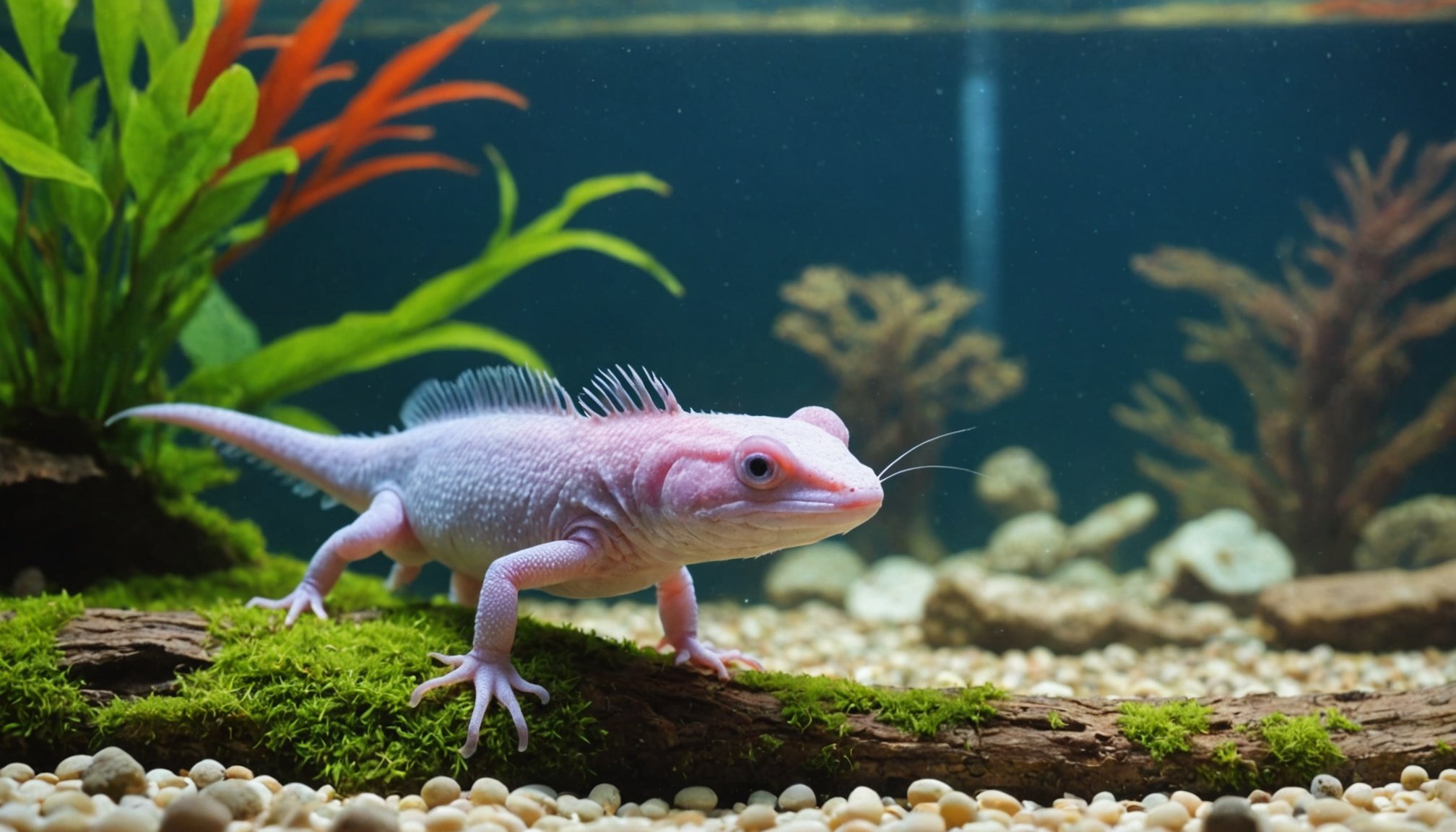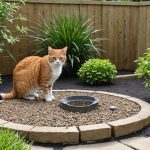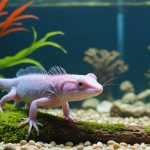Understanding Axolotl Habitat Requirements
Axolotls are fascinating aquatic pets with unique habitat needs crucial for their well-being. Originating from lake systems in Mexico, their natural habitat features cold, clear water with a delicate balance of pH and temperature.
Water Conditions
Water conditions play a pivotal role in axolotl care. Ideal temperatures should range between 16°C and 18°C (60°F and 64°F). Being sensitive creatures, drastic temperature changes can lead to stress and health issues. Ensure pH levels are slightly alkaline, around 7.4 to 7.6, to mimic their natural ecosystem.
A découvrir également : Creating an ideal vegetarian diet for your cherished guinea pig: a comprehensive guide
Tank Setup
A proper tank setup goes a long way in supporting an axolotl’s health. First, consider the tank size; a minimum of 20 gallons per axolotl is recommended to provide ample space. This accommodates their growth and reduces stress levels due to overcrowding. Good filtration and regular water changes are indispensable to maintain pristine water quality.
Essential Elements
Incorporate a gentle substrate, like fine sand, to prevent ingestion. Axolotls use their environment for hiding; thus, including caves and gentle plants is beneficial. Providing these elements in their tank setup ensures a comfortable, stimulating environment for these unique aquatic pets.
A lire également : Proven strategies to alleviate separation anxiety in your rescued british shorthair cat
Tropical Aquarium Conditions
Creating a thriving tropical aquarium requires attention to various factors to mimic a natural aquatic environment.
Temperature and Water Quality
Maintaining the correct water temperature is crucial. For most tropical aquariums, a range between 24°C to 28°C ensures the well-being of the species. Proper management of water quality is equally vital. Performing routine tests helps monitor pH levels, ammonia, nitrates, and nitrites, ensuring a balanced aquatic ecosystem. Regular water changes also aid in preserving a safe habitat.
Filtration and Water Movement
Effective water filtration is necessary to sustain a healthy aquarium. It aids in removing harmful substances, thus promoting a clean ecosystem. However, ensure that the water movement is moderate, particularly for species like axolotls, which prefer gentle currents. Adjustable filters are recommended to tailor the flow to specific needs.
Suitable Substrates for Tropical Aquariums
Choosing appropriate substrates is not only for aesthetic appeal but also for health. Sand or smooth gravel can support beneficial bacteria growth, essential for breaking down waste. The right substrate will also facilitate natural behaviours of the tank inhabitants, enhancing their comfort and fostering a harmonious environment for them and their tank mates.
Compatibility with Tropical Fish
Understanding Axolotl and fish compatibility is crucial for keeping a harmonious aquarium. Certain species of tropical fish make suitable tank mates, while others can cause issues. Species like guppies, mollies, and platys are generally compatible in community tanks with Axolotls. However, keep in mind their small size, which might classify them as potential snacks rather than companions.
Conversely, avoid fish such as cichlids, barbs, and tetras, known for fin-nipping and stress-inducing behaviour. Their aggression and speed can harm or stress the Axolotl, leading to unnecessary conflict.
When establishing community tanks, pay attention to behavioural considerations. It’s vital to monitor tropical fish interactions, ensuring peace within the tank. Look for signs of stress like fin-clamping, hiding excessively, or loss of appetite. These indicators suggest compatibility issues and may necessitate separation to maintain a healthy environment.
A conscientious approach ensures the right balance, fostering an aquarium that’s both beautiful and harmonious. Select species wisely, monitor behaviour, and create a setting where both the Axolotl and fish enjoy a stress-free ecosystem.
Challenges of Housing Axolotls in Tropical Aquariums
Ensuring a harmonious environment for axolotls in tropical aquariums poses significant challenges. Housing challenges include managing distinct environmental needs such as temperature and stress factors, which are critical to axolotl care.
Common Issues and Risks
Axolotls often face issues when cohabitating with tropical fish due to different environmental requirements. Aquarium management becomes complex as axolotls thrive in cooler water temperatures than many tropical species. The risk of stress and illness heightens if these conditions are not carefully monitored and adjusted.
Temperature Fluctuations
One of the biggest housing challenges is dealing with temperature fluctuations. Axolotls require stable temperatures that are significantly cooler than those preferred by tropical fish. Fluctuating temperatures can lead to stress or even deadly health complications for axolotls. Using a reliable aquarium management system can help maintain appropriate and stable temperatures.
Preventing Stress and Illness
To ensure a safe and healthy environment, several practices are recommended in axolotl care. Preventing stress involves creating a habitat that mimics their natural environment as closely as possible. Furthermore, maintaining consistent water quality and temperature can prevent illness, supporting their overall well-being in a tropical aquarium setup.
Setting Up the Ideal Tropical Aquarium for Axolotls
Creating the perfect aquarium setup for your axolotls involves thoughtful habitat customization. Start by gathering essential equipment such as a reliable water filter, a heater appropriate for axolotls, and a thermometer to consistently monitor water temperature. These devices are critical for effective axolotl care and ensuring a stable environment for these unique creatures.
Next, focus on the environment creation. The tank should ideally range between 15 to 20 gallons, providing ample room for your pet to swim freely. Use a tank layout that incorporates hiding spots and smooth decorations to prevent injury. Sand or large gravel are preferable substrate options to minimize the risk of ingestion, a common concern with smaller gravel. Plants, whether live or artificial, not only decorate the tank but also enrich the axolotl’s habitat and oxygenate the water.
Maintaining a balanced and safe aquatic environment is crucial. Regularly check water parameters, ensuring optimal pH and ammonia levels. Deliberate weekly partial water changes help in maintaining water quality. Adopt these tips for a thriving axolotl aquarium and witness your aquatic pet flourish.











